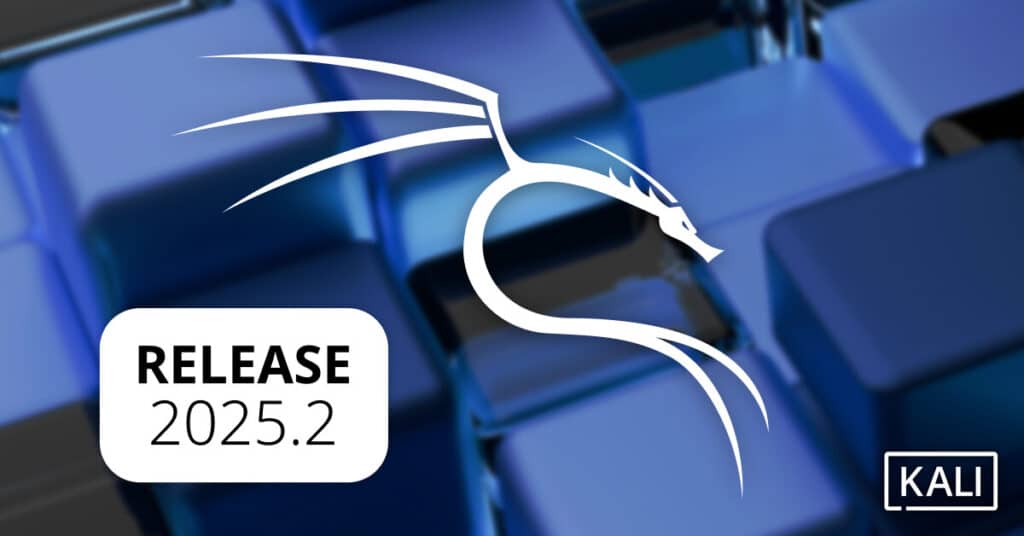Kali Linux, the leading distribution for cybersecurity professionals and ethical hackers, has announced the release of version 2025.2. This update brings 13 new tools, a refreshed user interface, significant advancements in car hacking, and new features for mobile and embedded devices.
CARsenal: Next-Generation Car Hacking Toolkit
One of the headline features of Kali Linux 2025.2 is the overhaul of its car hacking suite, now rebranded from CAN Arsenal to CARsenal. The toolkit has been expanded and redesigned for greater usability, targeting researchers and penetration testers focused on automotive cybersecurity. Key additions include:
- hlcand: Adapted slcand for ELM327 interface use.
- VIN Info: VIN identifier decoder for automotive forensics.
- CaringCaribou: Modules for Listener, Dump, Fuzzer, Send, UDS, and XCP, enabling comprehensive CAN/UDS protocol testing.
- ICSim: Virtual CAN simulator for testing CARsenal tools without requiring physical car hardware.
This toolkit positions Kali Linux as a premier choice for automotive security research, reflecting the growing need for robust tools to audit connected vehicles and CAN bus infrastructures. For more on automotive hacking, the community often references resources like Craig Smith’s Car Hacker’s Handbook.
Menu Revamp: MITRE ATT&CK Alignment and User Experience Improvements
Kali Linux 2025.2 introduces a completely redesigned main menu, now structured according to the MITRE ATT&CK framework. This shift streamlines navigation, making it faster and more intuitive for both red teams and blue teams to locate the right tool for each phase of an engagement.
The graphical interface has received a modern facelift:
- GNOME is updated to version 48, offering notification stacking, dynamic triple buffering, improved HDR support, and the new “Papers” document reader.
- KDE Plasma users get version 6.3, which boasts major improvements to fractional scaling, accurate battery cycle tracking, and advanced customization.
A new VPN IP indicator extension for GNOME also debuts, showing your current VPN address at a glance—a handy feature for privacy-minded professionals.
13 New Security Tools for Penetration Testers and Defenders
Among the most notable new additions to the Kali arsenal:
- azurehound: BloodHound data collector for Microsoft Azure, crucial for Active Directory cloud assessments.
- binwalk3: A powerful firmware analysis utility.
- crlfuzz: Fast scanner for CRLF vulnerabilities.
- rubeus: Kerberos attack and abuse tool, essential for Windows network penetration testing.
- sharphound & bloodhound-ce-python: Next-generation collectors for BloodHound Community Edition (CE).
- gitxray: Tool for analyzing GitHub repositories and contributors, useful for OSINT and codebase audits.
- ldeep: In-depth LDAP enumeration utility for Active Directory reconnaissance.
These tools join other recent additions, such as the latest versions of PowerShell (now 7.5.1 for ARM) and code-oss, to further strengthen Kali’s position as the toolkit of choice for security experts. A full list of tools can be browsed on kali.org/tools/.
Kali NetHunter: Enhanced Support for Smartwatches and Android Auto
Kali NetHunter, the mobile penetration testing platform, now introduces support for wireless injection and WPA2 handshake capture on smartwatches, starting with the TicWatch Pro 3 (bcm43436b0 chipset). This breakthrough means wireless network assessments can now be performed from a wearable device—an industry first.
NetHunter KeX, which brings a full Kali desktop to mobile devices, now works on Android Auto head units, expanding penetration testing capabilities to the automotive environment.
Kernel and driver support have been expanded to popular devices such as Xiaomi Redmi 4/4X, Redmi Note 11, Realme C15, and Samsung Galaxy S9/S10.
Raspberry Pi and ARM Platform Updates
Kali Linux 2025.2 consolidates its support for Raspberry Pi 5 into the standard 64-bit image and upgrades all Raspberry Pi devices to Linux kernel 6.12. New and improved udev rules simplify management of Pi-specific functions, such as running vgencmd without root privileges.
How to Upgrade to Kali Linux 2025.2
Existing users can upgrade their installations using the following commands:
echo "deb http://http.kali.org/kali kali-rolling main contrib non-free non-free-firmware" | sudo tee /etc/apt/sources.list
sudo apt update && sudo apt -y full-upgrade
cp -vrbi /etc/skel/. ~/
[ -f /var/run/reboot-required ] && sudo reboot -f
Code language: PHP (php)For fresh installs or live environments, ISO images are available at the official Kali website.
Community, Documentation, and Global Expansion
This release reflects a growing international community, with notable contributions from the ROKFOSS initiative in South Korea (which now offers local mirrors and translated documentation). Kali’s collaborative model means anyone can contribute to documentation, tool integration, or menu improvements—see Kali’s contribution guide for details.
Kali Linux 2025.2 continues to set the benchmark for penetration testing and digital forensics, adapting to the ever-evolving needs of cybersecurity professionals. With new tools, enhanced mobile and automotive support, and a community-driven roadmap, Kali remains the reference point for ethical hackers, security teams, and system administrators worldwide.
For the complete changelog, consult the Kali 2025.2 release announcement and official documentation.

